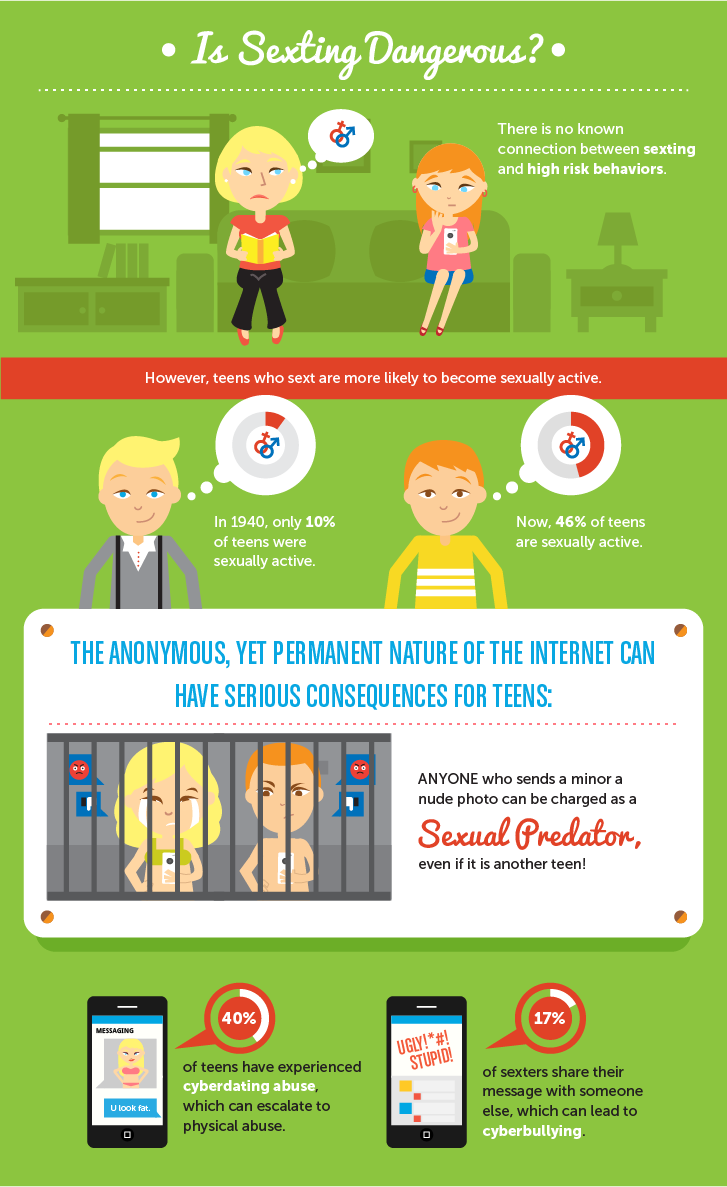The Sexting Revolution

by Amy Williams
For years and probably centuries, teens have been exploring their sexuality. In the 21st century, teens use social media and smartphones to satisfy their curiosity.
Healthy sexual development is one thing, but sexting, or the sending or receiving of sexually explicit or sexually suggestive images, messages or video, via a cell phone or the Internet, can expose our kids to some very unnatural consequences. As a parent, you want to protect your kids from anything that could put their safety at risk.
Many teens feel that sexting is harmless, because there are no chances for sexually transmitted diseases or unwanted pregnancies. While that fact is surprising to many parents, our children don’t realize that anything they post online has the potential to be shared with many others online. Content that is sent electronically creates a permanent “digital footprint”, even if a disappearing messaging app was used. Somewhere that text or image they created is taking up cyberspace.
Transmitting More Than Images: The Consequences Of Sexting
Sexting can increase the chances that your child will become the victim or perpetrator of online dating abuse or cyberbullying. Three-quarters of sexting teens have faith that their messages were only viewed by the recipient. But other data shows that 25 percent of sexters admit to forwarding the attachments and images to other people. This passing of personal and intimate information is where the true problems of sexting usually start.
Guess what is easy bait for a cyberbully? A leaked sext! Bullying is not new, but cyberbulling is a relatively new issue that uses a teen’s love for technology to humiliate them online. Granted, there will always be bullies, but the anonymity of social media quickly escalates the situation.
Sexting also leaves teens exposed and vulnerable. The recipient of the sexts now holds all the power in the relationship. Many times teens share private messages or pictures out of spite, not realizing the lasting damage it can cause. For these reasons, sexting can be a sign of an unhealthy relationship.
Out of the teens who sext, 61% admit that they felt pressure to send the images. Dating violence is not a new concept, but many teens are now experiencing digital abuse. This can range from pressure to sext all the way to having a partner share sexts on Facebook or Instagram.Teens need to know how to handle these situations.
To make matters worse, teens caught sending or possessing sexts are prosecuted as sexual predators. Even though sexting is often a consensual act between two teens, the law doesn’t see it that way. The judicial system views it as child pornography. This usually involves being labeled as a felon and getting registered on the sexual offender list.
The Ins-and-Outs of Sexting
With a lot of love, monitoring, and guidance it is possible for teens to avoid the risks of sexting. Parents and their kids need to be aware of the potential dangers of sexting so that they can talk openly and honestly about how to handle the pressure to sext. For more details and parenting tips on cracking the sexting code, please click on the image below to check out the full infographic.






